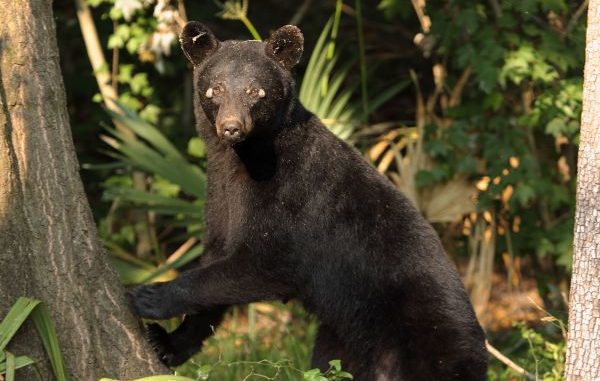
Deer, turkey and waterfowl all benefit from increase in quality bear habitat, LDWF says
Hey, hunters: The next time you see a Louisiana black bear — if you ever do at all — tip your hat.
That skittish bruin is doing a lot more for you than you might think.
Yes, they might tear up feeders or wreak havoc on your corn supply. But thanks to the extensive habitat management needed to establish their breeding populations, deer, small game and waterfowl are benefitting.
And that means hunting opportunities are increasing statewide.
Earlier this year, state and federal officials announced they were beginning the process to delist the animal from the Endangered Species List, a designation the bear has carried since 1992.
Its recovery, however, transcends the simple reintroduction of the black bear in Louisiana.
More than 800,000 acres of varying habitat in the Mississippi Alluvial Valley has been set aside as bear habitat and protected either permanently or at least for a considerable amount of time, according to the 2015 Louisiana Department of Wildlife and Fisheries Black Bear Management Plan.
Protected habitat has been critical to the recovery of the bear, which population estimates have pegged at more than 500 individuals (up from an estimated low of 80 in 1959).
Bear habitat includes state and federal land, or private property enrolled in conservation programs to restore forested lands in many cases.
Those frequenting Bayou Teche National Wildlife Refuge in St. Mary Parish are able to hunt there solely because of the Louisiana black bear. That 9,028-acre federal property was created in 2001specifically to provide protected habitat for the bear — the only NWR in the nation with such a mission.
Some of the private land protected for the black bear was already forested, while significant portions of almost 122,000 acres are now forested that were once cropland, according to the plan.
Private landowners have been enrolling in the U.S. Forest Service’s Conservation Reserve Program, which offers long-term rental payments and cost-share assistance to farmers creating permanent vegetative cover on cropland.
So land that was once cropland is now transforming into bottomland hardwoods, and that acreage is starting to provide excellent habitat for deer, turkey, small game and even waterfowl.
“Bottomland hardwoods habitats are very rich habitats,” LDWF’s Deer Study Leader Scott Durham said. “A lot has been restored from crops back to forest habitat through conservation programs.
“That’s a positive for deer and even turkey one day—even non-game species like song birds.”
Deer hunters know the benefits a healthy bottomland hardwoods habitat can have on a deer population — these forests provide mast-bearing trees to grow healthy herds. Many a big buck has come from similar habitat in Louisiana.
And wetlands have also expanded in range because of the bear, the plan states.
More than 140,000 acres of land has been preserved through the Natural Resources Conservation Service’s Wetland Reserve Program, which provides financial assistance to private landowners to restore and protect wetland areas that, of course, is suitable habitat for waterfowl and other migratory bird species.
According to Maria Davidson, one of the bear management plan authors and LDWF’s large carnivore program manager, the protected forested lands are here to stay.
“Those incentive programs are out there,” Davidson said. “They’ll still exist even when the bear is delisted.
“That will continue to happen, and I don’t foresee a time when habitat trends turn around and people are turning forested properties back into agriculture.”
According to the management plan, the bear is also a seed distributor.
Black bears routinely feed on hard mast such as acorns and pecans, while also selecting grubs or shrubs when available. Due to the bear’s extensive ranges up and down the MAV, seeds can be deposited in areas to promote further vegetation growth.
Mast-bearing trees are a favorite of deer, small game, and even waterfowl when the winter months flood low-lying areas.
So beyond habitat restoration, the bear provides ecological clues as to how a specific ecosystem is doing, and evidence the bear is thriving should be good news for a variety of hunters across the state.
“If you have a forest system that is producing enough to sustain a bear population, then the forest can likely support many other species of wildlife,” Davidson said.


